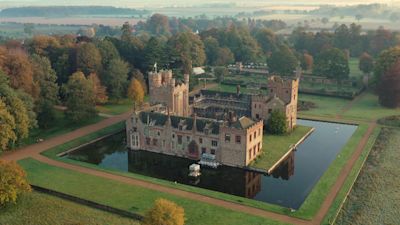Going back to its roots: Oxburgh Hall historic parkland to be restored

A new project will see the parkland at Oxburgh Hall in West Norfolk to be restored to its 19th-century glory.
RAF aerial photographs and a Victorian survey map are being used to help restore the parkland.
The project will involve trees being planted and meadows and ponds being created to encourage more wildlife.
The grounds of the 15th Century Hall were re-purposed as farmland to help feed the nation after the Second World War.
The National Trust bought the moated manor house in 1951 to save it from demolition but was only able to buy a few acres of the wider estate at the time.
Conservationists, who are using a Victorian Ordnance Survey map from 1904, will plant rare black poplar, white willow and oak trees.
Ten remaining ancient trees will be incorporated back into the original design.
Conservationist and historian Dr Sarah Rutherford worked closely with the estate team to research the project.
The project is set to benefit wildlife, from the nationally scarce hornet moth to the lesser spotted woodpecker, and the wood pasture will create new roosting sites for bats.
Native rare breed cattle, such as Red Poll which originated in East Anglia, will be brought back to graze the land.
Area ranger Tom Day, who is overseeing the project, said ditches will be reprofiled and scrub, lowland meadows and ponds will be recreated.
No Mow May: Wildflowers and wildlife encouraged to flourish at Oxburgh Hall
National Trust marks 125 years since first historic house purchase
New life breathed into historic garden statues at Wrest Park in Bedfordshire